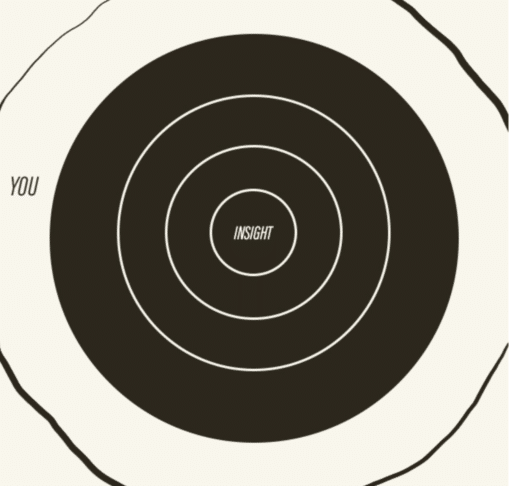August 15, 2019
Insight: Most Insights Are Terrible.

Everyone in marketing knows the value of a good insight; it’s arguably the marker for whether a campaign will, indeed, resonate with your target audience. And yet, terrible insights abound in the world of advertising. Though the responsibility of finding an insight falls on the agency, it should fall on the client to demand better insights from their creative partners. An insight is, well, insightful. It’s a true observation about the customer, combined with an empathetic understanding as to why that’s so. The truer and more focused the insight, the more effective the creative that stems from it.
Read on to learn about the value of a good insight, how to form an actionable one, how to avoid the pitfalls that lead to unhelpful insights, and how you can shape and demand better insights for your next campaign.
1 – AVOID THINGS THAT ARE NOT INSIGHTS
Creative briefs and RFPs are littered with things that are not insights: generalizations, truisms, naked statistics. “XX% of millennials are looking for experiences!” “It seems like convenient and delicious are impossible to reconcile!” “The challenge of finding the perfect face swapping app has never been more daunting.”
A good insight goes beyond raw data or a generalization about people as a broad category. A good insight takes an observation and goes deeper into what it means. Noting that 60% of body wash purchases are made by women is a solid start, but attaching that observation to “The Man Your Man Could Smell Like” makes it a great insight:tying a real observation about the universe with a solid hypothesis as to why this is so.
2 – STAY ON TARGET
Hypothetical example: a company with an audience that’s largely 55 year old white men. They want to expand their audience by reaching out on social media to attract a different audience than what they’re currently getting. The best practice would be to tailor the message to the medium, and to personalize creative to the intended audience. In a rational world, this might even happen.
Generally, though, companies get scared and fall back on the messaging that appealed to their core consumer, the consumer they’re trying to expand beyond. The end result turns into a compromised hybrid of the old and the new, that studiously avoids offending people, but fails to speak to anyone. In a world of increasing personalization and targeting, general messages fail to land, so insights should be similarly specific, otherwise they just read as “we punted on making big decisions about our messaging.”
3 – START WITH DATA
If 56% of millennials are drinking craft brew, what does that mean? You could hypothesize that it implies a yearning to return to a simpler, more handcrafted time. You could posit that it speaks to a hunger for novelty and new experiences. Craft creative that leverages each of these hypotheses, and you’ll be rewarded with data that shapes and augments your understanding of what works and why.
4 – LEVERAGE YOUR KNOWLEDGE OF YOUR CUSTOMER BASE
If there’s one thing we’ve learned from RFPs, it’s that people want things that are convenient & inexpensive, healthy & delicious… you get the idea. In addition to being unspecific, these “insights” reflect a failure to use your hard-won knowledge of your customer base. Every business in DTC has tried dozens of A/B copy tests, multitudes of brand revamps, and more direct mailings than can be counted. You know your personas, you know what your die-hard fans love about your brand, and you know what makes people convert. Hence, your insights should be more in-depth than something any freelance strategist could come up with in five minutes. Look for insights about where your customers come from, and what makes the unconverted want to convert. Once you have your arms around that, you can come up with insights that allow you to do more of it.
